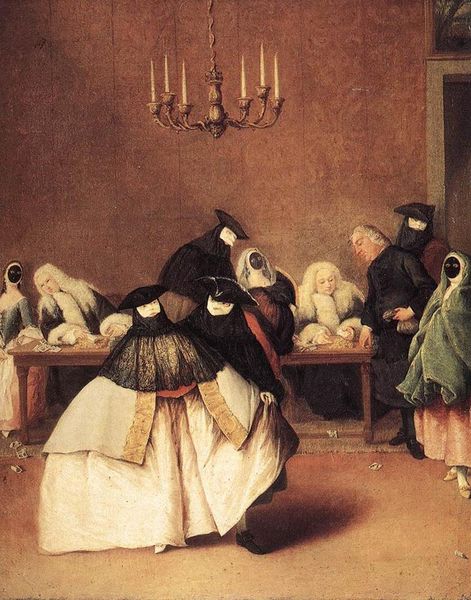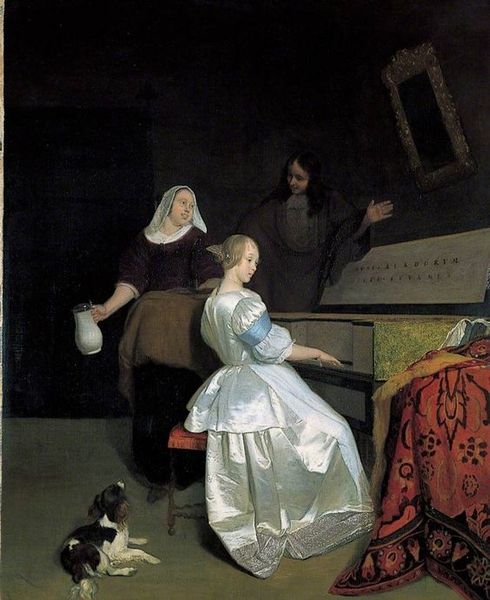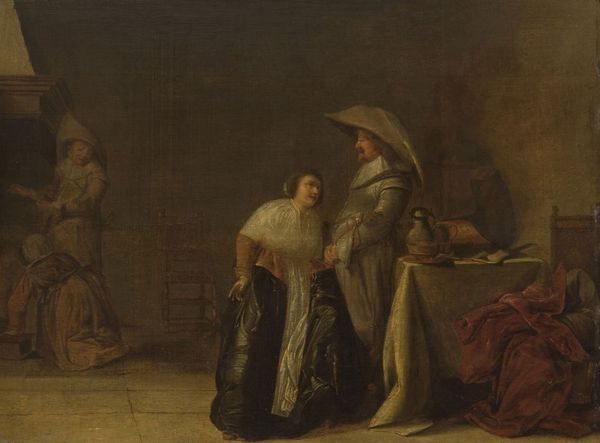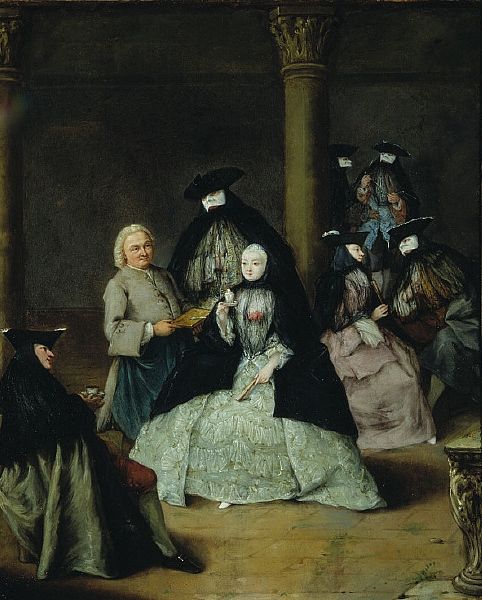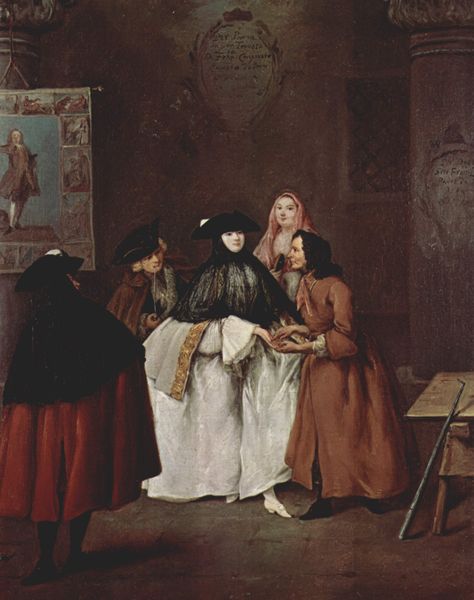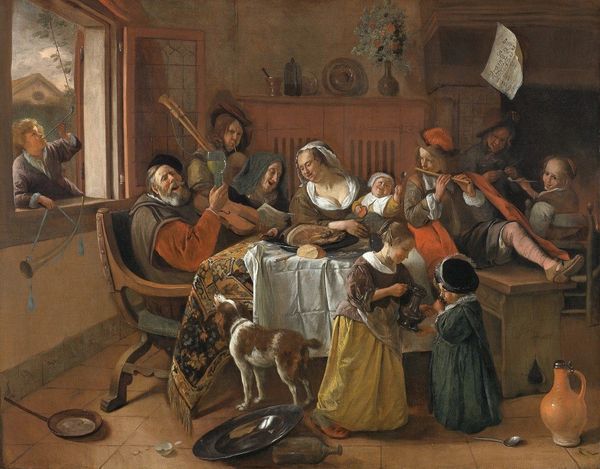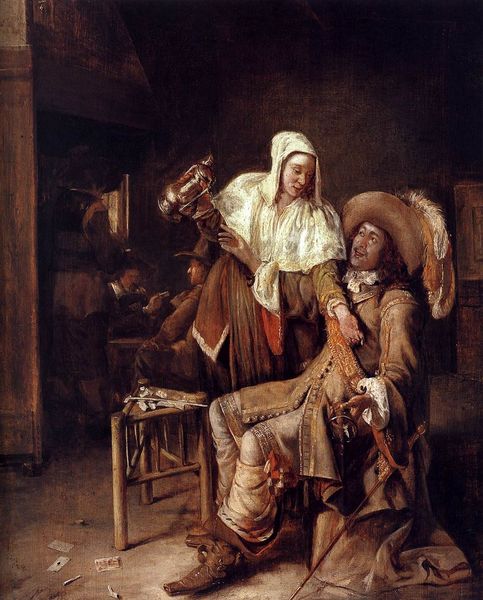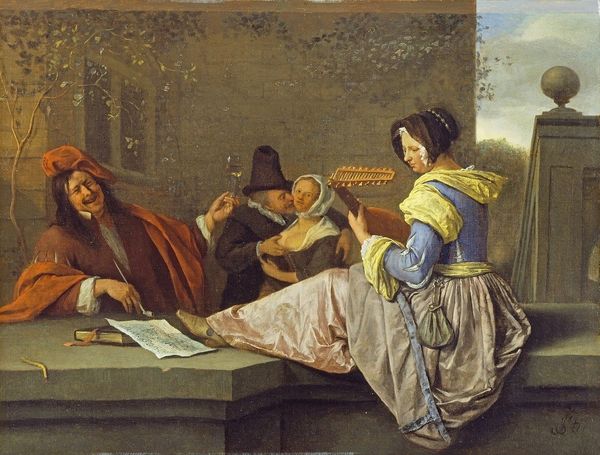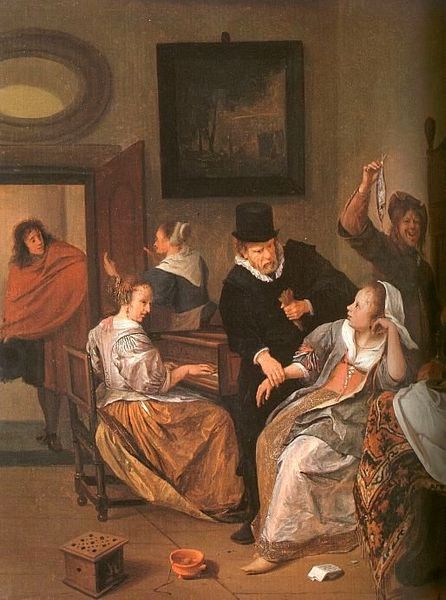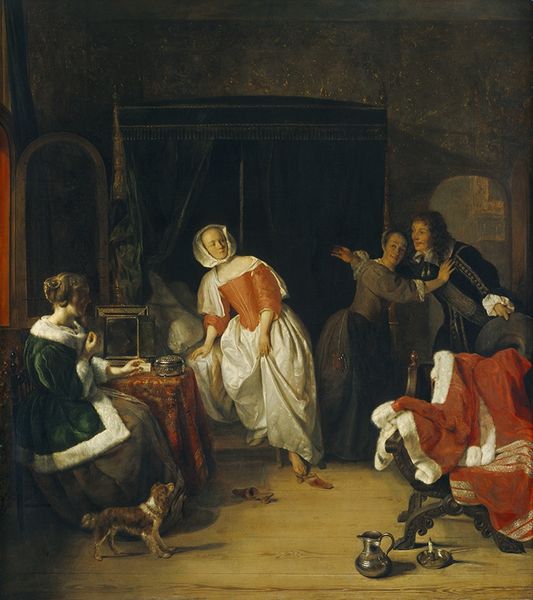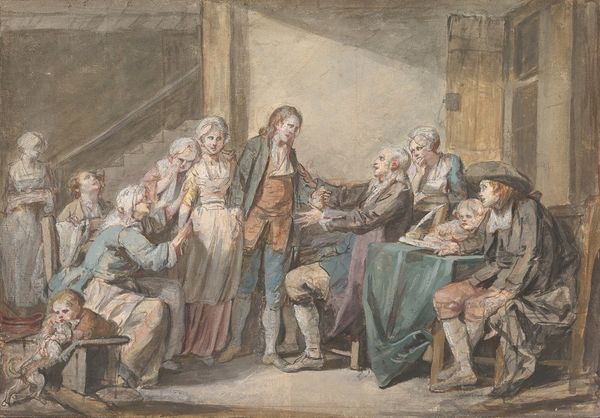
Copyright: Public domain
Editor: So, this is Pietro Longhi's "A Fortune Teller at Venice" from 1756, done in oil on canvas. I'm immediately drawn to the theatricality of the figures, especially with their masks and costumes. The subdued palette creates an almost dreamlike atmosphere. How do you interpret this composition? Curator: The arrangement of figures within the picture plane immediately establishes a structured dynamic. Note the almost pyramidal composition, drawing the eye upward from the fruit seller to the central, masked figure and the veiled observers behind. The interplay of light and shadow is carefully managed to emphasize form and texture. The folds in the fabrics, the curvature of the columns—they create a visual rhythm. Do you see how Longhi uses these elements to direct our gaze? Editor: I do! It’s almost like a stage set, with each character positioned deliberately. What about the way he renders the textures, the matte quality of the walls against the sheen of the silk? Curator: Precisely. The tactile qualities are paramount. Consider the contrast: the roughspun attire of the lower classes versus the shimmering fabrics of the nobility. It’s a formal device, isn’t it? It elucidates the social hierarchy inherent within the narrative itself, quite apart from what the scene is supposed to represent. Editor: I hadn't considered it that way – as a contrast between social classes and not just highlighting the figures' different dress styles. Thanks, it all suddenly feels more thought out! Curator: Art invites us to consider those relationships – formal, social, narrative. By attending to the structure and the surface, we are often better prepared to understand the content and meaning. Editor: This was very illuminating. Now, when I observe artwork I can start looking beyond what’s depicted and analyzing *how* it’s depicted.
Comments
No comments
Be the first to comment and join the conversation on the ultimate creative platform.
